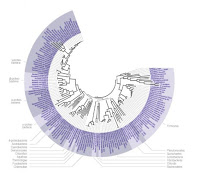Microbiologists have been at the forefront of genomics since Haemophilus influenzae became the first organism to have its full genome sequenced in 1995 using Sanger sequencing.
Even with modern technology, we are just beginning to appreciate the complex interactions between microbes and Earth’s many ecosystems. For example, the human body is composed of ten times as many bacterial cells as human cells, helping us to process food, moderating our immune system, and protecting us from the environment.
The growing awareness of the critical role microorganisms play in our lives has led to increasing efforts to understand them. It is becoming ever more clear that only high-quality finished genomes can provide answers to the full range of questions about microbes of interest, for example, regarding genome structure, gene prediction, gene regulation, and more. A finished genome is better than 99.999% accurate and contains each distinct genetic entity, such as the bacterial chromosome or a plasmid, as a single contiguous sequence. Large-scale internal genomic rearrangements and horizontal DNA transfer between species occur frequently, so the ideal for sequencing microbial genomes is to create finished genome assemblies de novo, meaning that one determines the genome sequence “from scratch,” with no pre-existing reference sequence information. This ensures that analysis is not biased by previously generated sequence data.
Only by having a complete and detailed blueprint of these organisms at a molecular level — a full genome sequence, methylation markers, and more — can we hope to fully make sense of them and use that information to improve human health.
This information is excerpted from a new primer on the utility of PacBio sequencing for microbial genomes. View the full document, which includes information about the importance of finished genomes, genome-wide methylation, and more.
